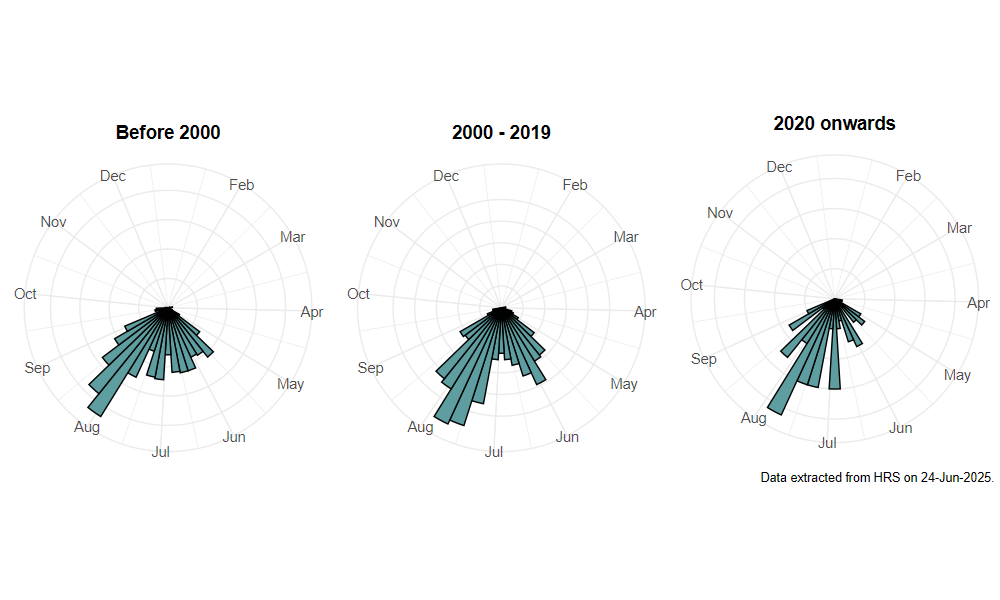Eumerus strigatus (Fallén, 1817)
Identification
Identification difficulty = 3. ![]()
![]() according to Ball & Morris, 20241
according to Ball & Morris, 20241
Biology
The larva tunnels in the bulbs of daffodils Narcissus sp. and rhizomes of Iris, as well as a range of other cultivated and wild species, usually when there is some damage and rot is present. Adults are frequent flower visitors and can be found attending the flowers of Wild Carrot Daucus carota usually. They can also be found flying low among vegetation or resting on dead stems and bare soil. Although there are records from gardens, this species is more frequent in wetland habitats; they were, for example, much more abundant than E. funeralis in material from water traps in the East Anglian fens.
Flight period
The following plots show the number of unique records per week excluding those reported to be of immature stages.

Distribution
Records extend north to the Moray Firth but the majority of records occur south of a line between the Ribble and the Tees. It is very noticeable that this species is most abundant in eastern England.

Trends
The following plots show the Frescalo TFactor vs year and a map of the rescaled frequency (all records) for the species.
-
Ball, S., & Morris, R. (2024). Hoverflies of Britain and Ireland. WILDGuides (3rd ed.). Oxford: Princeton University Press. ↩